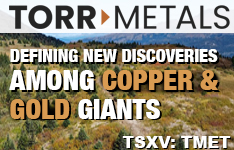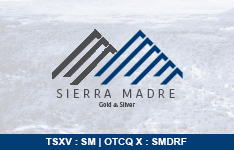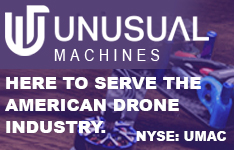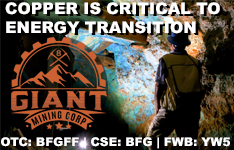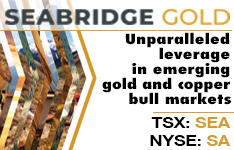William Plovanic: I don't think investors are necessarily positive on medical technology, but they are definitely looking for opportunities. Medtech has been difficult from a macro perspective, and therefore investors have not been focused on putting money to work in this space. Over the last year or two it's been challenging, to say the least.
TLSR: We had a bit of a run-up in medtech between mid-December and end of January. My assumption was that this was part of a general market upswing.
WJP: Over the last 12 months, a lot of companies, especially the growth names, have traded in a range after peaking at the end of 2010—early 2011. The stocks that did move in the sectors that I cover were due to company-specific drivers. But as a whole, 2011 was probably more of a consolidation year.
TLSR: So you have to be selective when you're choosing medtech stocks, is that what you're saying?
WJP: I think you do, but I've also seen the risk trade in high-growth, high-multiple stocks make advances. As money flows back into medtech, it typically goes into that high-growth group.
TLSR: On the outperformers, you think momentum has been the issue there?
WJP: On the growth names, definitely.
TLSR: What has been holding medtech back? Is it macroeconomic, larger co-pays/annual deductibles, regulatory? What is the single biggest factor?
WJP: All of the above. Obviously, these have resulted in a slowdown in procedure volumes, which have changed drastically, and that has negatively impacted these companies. On top of that, we're looking at negative pricing in orthopedics, which used to be a sector that realized positive pricing power, and that's macroeconomic driven as well. Two things have really impacted the sector, volumes and pricing. All of these factors have impacted the growth rates and the bottom line earnings of these companies for the past couple of years and they will likely continue to do so going forward as well.
TLSR: The earth has really shifted under the feet of this sector.
WJP: Right. Also, new technologies are the lifeblood of any industry, and one of the big issues, for med tech as a whole as well as orthopedics, is the regulatory environment. It has become more challenging and more stringent, resulting in fewer new technologies being approved, and that has caused growth rates to slow. That has also been one of the causes of lower pricing. Typically, a new product allows you to gain a premium price. If you don't have innovation and new technologies coming to market, you can't drive price mix.
TLSR: So, companies need to innovate, but the regulatory environment is in the way?
WJP: Companies are trying to innovate, but with more stringent requirements, it pushes out the timelines and increases the cost of innovation. Companies have to become more selective on what technologies they move forward with, based on what they believe the regulatory process may or may not be for any given project.
TLSR: Has the slowdown in regulatory approvals been a factor related to the increasing complexity of the technology, or is there something else going on at the U.S. Food and Drug Administration (FDA)?
WJP: That's a difficult question to answer. Has the complexity of the devices changed drastically in the last four years? No, but it has probably changed over time. Maybe the regulatory process did not keep pace with technology advances over the past few decades, and it's finally making the changes necessary. But we've definitely seen a much more difficult regulatory environment.
TLSR: Bill, do you expect to see consolidation in medtech during 2012?
WJP: We have already seen some consolidation, and given the balance sheets of the larger companies and the lack of innovation, I would expect to continue to see that consolidation in order to drive the top line revenues for those larger companies.
TLSR: I assume that investors want to play the boomer market, and that would mean largely musculoskeletal. Of course it could also be the cardiovascular realm as people live longer.
WJP: It could be orthopedics, cardiovascular, diabetes, obesity or aesthetics. There are many different ways to play that market.
TLSR: Are there decent margins to be had now in orthopedics?
WJP: In the orthopedic companies that I follow, the range of gross margins is typically from 60–80%. There are always some outliers, but that's the range. You don't start falling down to a 50% or below gross margin until you get into truly commoditized product lines.
TLSR: What shifts are you seeing in the orthopedic/spine industry currently?
WJP: For total joints, the discussion has shifted away from materials and squarely onto fit and alignment. That could be achieved via robotic surgery, custom implants or custom cutting guides, but we've definitely moved away from materials as the solution.
There haven't been a lot of new technologies in the spine area, but the one bright spot is artificial discs. I think we'll see the approval of several cervical discs coming over the next 12–24 months. I think that can help drive that market.
With extremities/trauma, it's been the creation of procedure-specific implants. Customization is really a very fast-growing market, and that's driven an increased focus on this segment. Surgeons and companies are coming up with new products that are specifically kitted to solve a problem. If I need a plate for a procedure, it's specifically made for that specific anatomy rather than bending and cutting a standard plate to make it fit. I think we've seen a lot of those types of technology advancements helping to drive that market.
TLSR: Bill, what companies are you talking to investors about today?
WJP: Growth names include MAKO Surgical Corp. (MAKO:NAS) in robotics; I also follow DexCom Inc. (DXCM:NASDAQ) in diabetes with its continuous glucose monitoring sensor; Insulet Corp. (PODD:NASDAQ) with its disposable insulin pumps; and NxStage Medical Inc in the dialysis market. In terms of value names, there's NuVasive, Inc. (NUVA:NASDAQ) in spine; ArthroCare Corp. (ARTC:NASDAQ) in sports medicine. And then there is Solta Medical, Inc. (SLTM:NASDAQ) in the aesthetics space with its non-invasive fat ablation product that it has just started commercializing in the beginning of this year. Of the 21 stocks I cover, those seven names are probably the most discussed on my coverage list today.
TLSR: You have DexCom rated Buy with an $11.50 price target. It's pretty close to that now. Do you expect to raise your target?
WJP: I believe the company is well positioned this year in terms of the guidance it provided and the potential for it to outperform those expectations. As companies beat and raise estimates, the price targets can typically move up. I think the big value driver for this company will be its Gen 4 sensor, which is not due out until the end of this year/early next year. Again, I repeat that stocks tend to perform well in beat-and-raise years.
TLSR: You mentioned NxStage Medical, a growth story. It's about portable home hemodialysis. You raised your target price from $24 to $26. This is the kind of technology that can reduce cost for an insurer, can it not?
WJP: I think the key to NxStage's home hemodialysis is the fact that it's a better therapy for the patient. The economic data showing that it reduces costs to the system will be out the middle of this year. We've seen data from frequent dialysis studies and it tends to point in that direction, but I think what people need to really understand is that when nephrologists and nurses are polled, almost all, like 98–99% of them, would rather patients be on home hemo or peritoneal dialysis rather than in-center. More frequent dialysis allows for lower drug use, better quality of life and quicker recovery times post treatment. It is the right treatment.
TLSR: You say economic data are coming out mid-year. I'm just thinking here, FDA is considering economics along with safety and efficacy in medtech. Why doesn't FDA just defer this to Centers for Medicare & Medicaid Services (CMS) and judge the product on its safety and efficacy?
WJP: Great question.
TLSR: So, do you have a comment on that?
WJP: No.
TLSR: Can NxStage improve predictability for reimbursement purposes?
WJP: That will come over time. CMS will need to do that. One other thing about this industry is that the service providers, the clinics such as DaVita Inc. (DVA:NYSE ) and Fresenius Medical Care (FMS:NYSE ), are the gatekeepers. They're the ones that get reimbursed and they basically control which therapy the patient goes on. So at the end of the day, you get predictability when payers know exactly what the economic model looks like for each type of therapy, and adoption will likely increase. I would say at this point, NxStage, which has more than 5,000 patients on its therapy, has been mostly a word-of-mouth, grassroots campaign.
TLSR: You mentioned the robotics company MAKO Surgical, another of your growth names. This stock is up 35% in the past three months and has almost doubled in the past 12 months. What makes it so interesting?
WJP: I believe it's also the most expensive stock in med tech from an enterprise value:sales multiple. Robotics has been a big value driver. Intuitive Surgical Inc. (ISRG:NASDAQ) was a great success, and I think people point to that company a lot. MAKO has done a phenomenal job in the unicompartmental knee replacement market. Historically, the challenge was surgeons being able to implant the replacements correctly. It was very technique-sensitive. What MAKO did was to make this procedure extremely reproducible in any surgeon's hands. Why replace the whole joint when you can intervene earlier and replace only the diseased part?
However, the value and the driver of this stock over the last 12 months have been the expectations for the hip market, which it has been slowly launching. MAKO showed the product at the American Academy of Orthopaedic Surgeons' big conference in the spring of 2011, and it started commercializing it at the end of 2011. I think that's what really drove the stock over the last 12 months. I think the jury is still out on how quickly the adoption and penetration rate will be for the hip application and implants.
TLSR: You also mentioned ArthroCare, which has had its issues with the Department of Justice (DOJ). What do you have it rated?
WJP: We have a Buy rating on ArthroCare, and our target is $29.
TLSR: What do you like about it?
WJP: The thesis on ArthroCare is it is a market leader in the two markets where it competes. It started as a platform technology company and created the market-leading position in sports medicine for the use of energy for the cutting/ablating of soft tissue rather than using mechanical tools. It now has 50% of that energy market in sports medicine. It then utilized that beachhead to backfill with other products that would be used in arthroscopic procedures. It also took the technology and moved it into the ear, nose and throat (ENT) market for tonsillectomies where it now has 40% market share. It has also done some backfilling with some other ENT products. It's a company that has great market leadership in the subsegments where it competes. It also has a very high free cash flow yield, floating around 10% right now.
TLSR: But it's had the legal issues.
WJP: The ongoing legal issues have been its biggest challenges over the last three or four years. But it's been going through its checklist one-by-one and ticking them off. It had almost completed that, and then a new one popped up. We'll see how long that one takes to get resolved. This is a company that has great market position and great potential. In terms of acquisition, it would fit well into somebody else's portfolio.
TLSR: So it's a takeout candidate, but now it has the new issue with the DOJ which could put more pressure on the stock.
WJP: It would delay the timing of anything, which therefore puts pressure on the stock. That's why the stock moved from $30 down to where it is.
TLSR: Are the shareholder lawsuits nuisances, or are they material as well?
WJP: Actually it took a charge for the shareholder lawsuits and put the money aside for that. So, that's one of the legal issues that has been resolved.
TLSR: I'm noting that you follow and have a Buy on Exactech Inc. (EXAC:NASDAQ) with a target of $27. Could you speak to that one?
WJP: Exactech is actually the company I've had coverage on the longest, since March 1998.
TLSR: Your target price implies about 80% upside.
WJP: The company trades at a significant discount to the rest of small cap medtech. When it gets some of its new product cycle moving and growing its top line, it will be lifting to a valuation that's closer in line with all of small cap.
TLSR: The company appears diversified in its product lines, and I thought that was interesting considering its small market cap.
WJP: The challenge with these smaller companies is that orthopedics is a capital-intensive business, and they tend to have very low free cash flows. All their money needs to be reinvested into instruments to help grow the business. So orthopedics is definitely a business of scale, and scale could be $1 billion (B) in revenue, but it's difficult to get to that $1B because share shifts very slowly.
TLSR: You mentioned one of your value names, NuVasive, and you have it Buy-rated with a $21 target.
WJP: NuVasive is a stock that we've covered for probably three or four years. We went negative on it with a Hold rating about a year and a half ago. We foresaw a lot of the challenges coming in the spine market, including price and procedure-volume impact. At current valuations, we recently upgraded it. Given the acquisition of the neuromonitoring business, we felt that this stock was finally positioned where it could meet or exceed expectations. We felt that if approval of its cervical disc and the cross-selling efforts with neuromonitoring could come to fruition that it would be all upside to the numbers. Upside tends to drive stock higher. Given the current valuation, which is anywhere between 1–1.5x enterprise value:revenue, that tends to be a bottom for these names. On top of that, NuVasive is the category leader. It created the lateral procedure where it leads the market. It is considered the best player with that technology, and that is a great asset in my opinion.
TLSR: Insulet is one of your growth names. Would you comment on that?
WJP: Insulet is an interesting technology. It is the first player to market with a three-day, disposable insulin pump. It's another company like DexCom that has had challenges with new products coming through the FDA. Its next-generation disposable pump is a very promising technology, and should help more from a profit and loss standpoint than anything else. It's a little smaller, and it might be a little more applicable to a broader patient population as a smaller patient can wear it. But I think this is more of a gross margin story, allowing it to increase from a 50% level to, say a 65–70% gross margin. We have Insulet rated Buy, and the target is $27.
TLSR: You mentioned Solta Medical in the aesthetics space.
WJP: Solta really pioneered fractional laser technology, Fraxel, for skin resurfacing and also the use of radiofrequency energy for skin tightening under the Thermage brand. Solta is different from the rest of the aesthetics pack in that a large component, more than 50% of its business model, is disposables, which is significantly higher than any of its energy device competitors. Those disposables carry ~90% gross margins. The reason we like it that it is literally in the first inning of a new product cycle in a new market with a different technology to be sold to its current customer base. It acquired Liposonix, a noninvasive fat ablation product. It is second to market in this category, and it just began commercializing the product at the end of 2011. We'll see the first significant revenues from this product in Q112. Non-invasive fat ablation is a very fast-growing segment of the market.
TLSR: These procedures are largely non-reimbursable.
WJP: They're all cash out of pocket.
TLSR: Bill, I enjoyed speaking with you.
WJP: Thank you very much.
William Plovanic joined Canaccord in 2007 as managing director, medical technology equity research analyst. He has been a publishing sell-side analyst with coverage of medical devices for over 15 years. Mr. Plovanic's areas of coverage include orthopedics, diabetes, obesity, neuro-technologies, dialysis, aesthetics and general surgery. In 2009, Plovanic was ranked as the #2 Earnings Estimator for Health Care Equipment & Supplies by Starmine. Furthermore, in 2003 and 2004, Mr. Plovanic was selected as a Wall Street Journal "All Star" Analyst in the medical device sector and in 2002 was named the #1 ranked analyst by Starmine for stock picking and performance in the medical technology sector. Mr. Plovanic is a frequent presenter at medical and industry meetings. Prior to Canaccord, Plovanic was a managing director and senior research analyst at First Albany (now Gleacher & Company). Previously, he worked at PMG Capital covering medical devices and products. He also worked as director of research for the capital markets division of LaSalle St. Securities Inc., where he focused on the small-cap healthcare, technology and biotechnology industries. He graduated from Bradley University with a Bachelor of Science in finance and is a chartered financial analyst.
DISCLOSURE:
1) George S. Mack of The Life Sciences Report conducted this interview. He personally and/or his family own shares of the following companies mentioned in this interview: None.
2) The following companies mentioned in the interview are sponsors of The Life Sciences Report: None.
3) Bill Plovanic: I personally and/or my family own shares of the following companies mentioned in this interview: None. I personally and/or my family am paid by the following companies mentioned in this interview: DexCom, Insulet Corp. and TranS1 are investment banking clients of Canaccord Genuity Inc. Additional information, including disclosures regarding all securities under research coverage, is available at Additional information, including disclosures regarding all securities under research coverage, is available at http://www.canaccordgenuity.com/en/ODD/pages/disclosures.aspx. I was not paid by Streetwise for participating in this story.

















